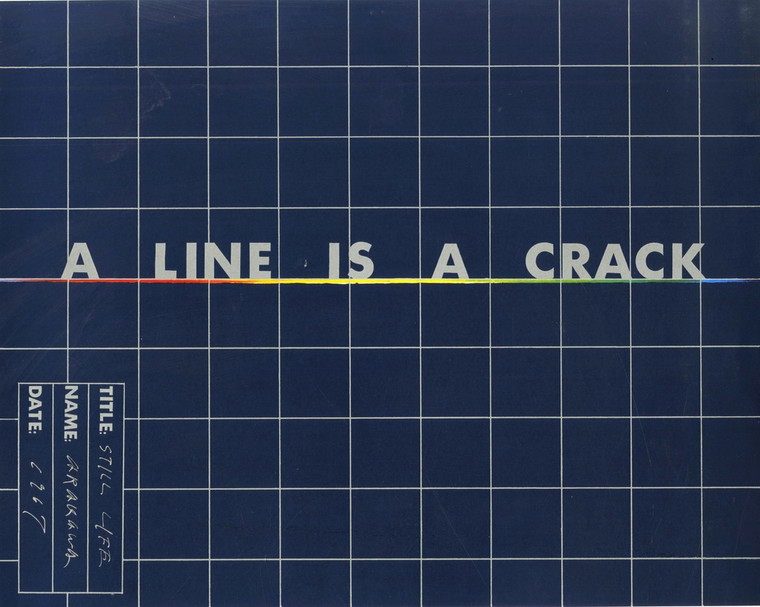
Still Life, from To and From Rrose Selavy, for Marcel Duchamp, 1967
Shusaku ArakawaCONTACT GALLERY FOR PRICE
Shusaku Arakawa
Still Life, from To and From Rrose Selavy, for Marcel Duchamp, 1967
Silkscreen on velincarton (thin board) paper
Hand signed, titled and dated
10 1/2 × 13 1/4 inches
Edition of 60
Eager to share Marcel Duchamp with Japanese audiences, Shuzo Takiguchi - a Japanese-born poet, critic, and artist with ties to Surrealist circles, assembled an international portfolio of graphic works by various artists with strong ties to Duchamp, to accompany the deluxe version of his monograph, "To and From Rrose Sélavy". The present work was created for this portfolio by one of Marcel Duchamp's friends, Shusaku Arakawa. It is signed, dated and titled on the front - and can be exhibited both vertically and horizontally - (see photos). The present work, along with others in the portfolio, was published in Japan and is rarely found stateside.
Shusaku Arakawa (荒川 修作 Arakawa Shūsaku, July 6, 1936 – May 18, 2010) who spoke of himself as an “eternal outsider” and “abstractionist of the distant future,” first studied mathematics and medicine at the University of Tokyo, and art at the Musashino Art University. He was a member of Tokyo’s Neo-Dadaism Organizers, a precursor to The Neo-Dada movement. Arakawa’s early works were first displayed in the infamous Yomiuri Independent Exhibition, a watershed event for postwar Japanese avant-garde art. Arakawa arrived in New York in 1961 with fourteen dollars in his pocket and a telephone number for Marcel Duchamp, whom he phoned from the airport and over time formed a close friendship. He started using diagrams within his paintings as philosophical propositions. Jean-Francois Lyotard has said of Arakawa’s work that it “makes us think through the eyes,” and Hans-Georg Gadamer has described it as transforming “the usual constancies of orientation into a strange, enticing game—a game of continually thinking out.” Quoting Paul Celan, Gadamer also wrote of the work: "There are songs to sing beyond the human." Arthur Danto has found Arakawa to be “the most philosophical of contemporary artists." For his part, Arakawa has declared: “Painting is only an exercise, never more than that.” Arakawa and Madeline Gins are co-founders of the Reversible Destiny Foundation, an organization dedicated to the use of architecture to extend the human lifespan. They have co-authored books, including Reversible Destiny, which is the catalogue of their Guggenheim exhibition, Architectural Body (University of Alabama Press, 2002) and Making Dying Illegal (New York: Roof Books, 2006).
The entire portfolio, including this work, is referenced in the Marcel Duchamp catalogue raisonne:
Arturo Schwarz The Complete Works of Marcel Duchamp, Abrams, P.532, 344c
Very good condition; minor scuffing visible up close; otherwise fine.







